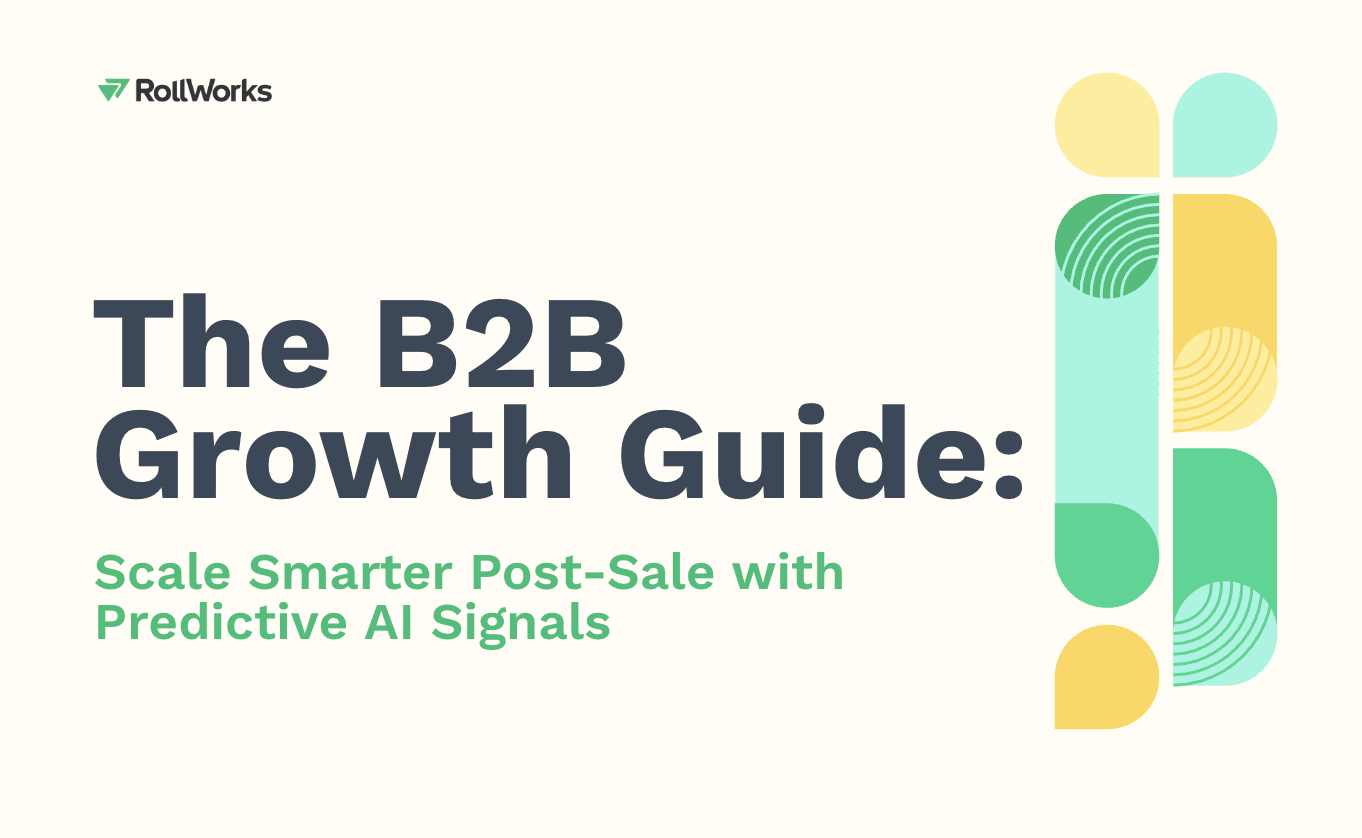According to a 2020 ITMSA report, 76% of companies saw higher returns with account-based marketing (ABM) than other forms of marketing. Unfortunately, most heads of marketing aren’t just handed an unlimited budget to go out and build their ABM dream team. Especially in smaller, leaner organizations, marketing departments need to prove, document, and build a case for specialists.
Fortunately, you’re not alone—no one comes into a job with a blank check. Even the highest-flying, and most successful ABM teams were built from the ground up, one piece at a time. This is your guide on how to do that: how to transform your marketing generalists into a lean, mean, account-crushing machine.
But let’s back up for a minute: why bother building an ABM team, and what even is ABM? Why should companies be trying to ABMify their marketing?
Why bother with ABM?
Account-based marketing isn’t new, no matter what breathless headlines on marketing news sites and blogs may shout. The idea of selling to accounts rather than to individual people has been around since the inception of most B2B selling strategies. And marketing and sales enablement teams have been around almost as long to create targeted, account-focused marketing campaigns and materials to help move the needle.
ABM has long been valuable to the marketer’s toolbox because it allows for the persuasiveness and effectiveness of a one-to-one approach without sacrificing the efficiency of one-to-many campaigns. Put another way, for B2B teams, ABM is an ideal way to balance hyper-personalization and mass marketing that gets better results at lower costs (when done with the right foundation).
So what changed to make ABM the latest buzz in marketing? The short answer is technology and scope. Technology has made account-based marketing more efficient but has also raised the bar on the skills necessary to make the most of new tools. And a changing scope has seen marketers take on more of the roles and responsibilities once handled almost exclusively by sales enablement teams. But with that has also come scale: the ability for teams of all sizes to leverage this new world of ABM in a way that wasn’t possible before.
So about that worker crunch…
As ABM shifted from providing brochures and flyers under the management of sales to a fully-fledged elite unit that runs integrated, omnichannel digital campaigns, companies are finding it difficult to hire enough skilled workers to build ABM teams. And even when hiring isn’t an issue, it’s rare to have the open headcount to bring in a team of specialists. You have who you have, and you need to ABMify them or miss the opportunity.
Don’t worry—it’s entirely possible to build an internal ABM team without hiring a team of ABM experts. Here’s how to ABMify your marketing without a dedicated ABM team:
1. Clearly define a manageable scope
Just like marketing departments, ABM approaches come in a wide variety of sizes. Large, well-established organizations may find themselves in a position to try everything from the account-based buffet. Smaller marketing teams, though, will need to carefully pick and choose which strategies, tools, and tactics they have the capacity to run and focus on getting the most out of those before expanding. They also need to carefully weigh each focus metric against its contribution not just to campaign-level goals but also to bottom-line business results.
ABM isn’t about getting as many leads into the pipeline as you can—it’s about making sure the right leads are guided from initial engagement to long-term customer. Correctly defining the scope of your ABM approach can mean the difference between a successful program and an expensive mistake.
2. Partner with your sales team
Two heads are better than one, and two departments working together is better than a siloed approach. Closing key accounts is easier when everyone is working toward a common goal, and the best way to ensure that is to bring the sales team in early in the process. This is especially true for smaller marketing teams working with less available data and manpower but is just as important in larger organizations.
While marketing can often do the initial research into which accounts would be the most profitable to get into, the sales team likely has a wealth of information on which approaches and strategies will work best for those key accounts—who you need to reach, what kind of messaging resonates with them, and how to get in front of decision-makers. And while sales might know who to reach when with what, they may not always have the manpower or toolset to do so. This is where ABM really shines—marketing and sales working not on an ad-hoc “first, then” basis but in a coordinated way to engage prospects and guide them down the sales process until they convert.
3. Take advantage of available training
The rise in the awareness of ABM has also led to a rise in the availability of training and educational programs on how to do it right. Take advantage of these opportunities. If you have the human capital, designate a point person to go through as many classes and training sessions as they can find and bring the knowledge back to the rest of the team. Between masterclasses, courses, product demos, blogs, e-books, and whitepapers, companies have more resources than ever to develop a top-notch ABM team in-house.
4. Leverage the right technology
There’s a lot of ABM software out there, but not all of it does the same thing in the same way. Selecting the right technology to help your team transition to an account focus is critical to your success. Keep in mind, however, that the right technology is different for every organization. Look for tools that allow your team to accomplish their goals in a cost-effective manner, that work with your existing workflow, and that don’t cost extra for features that don’t support your carefully tailored scope.
Adding ABM technology to your organization doesn’t just allow your team to produce better work. It can multiply your efforts, allowing small marketing teams to function as if they had a hundred employees instead of ten.
5. Identify key accounts to target
You don’t need a fully formed ABM team to start executing in an account-focused way. Start by reviewing your ideal customer profile (ICP) and refining it down until you can use it to clearly filter out which accounts may be likely to result in sales. Then use the technology you picked up in step four to build a pool of accounts (your Targeted Account List, or TAL) that are a good fit. With a small marketing team, you’ll probably be able to focus on only a handful of key accounts at a time, but that’s not a problem since they’re likely to be your most valuable accounts. Work the accounts you can, prioritizing the ones with the biggest impact on your bottom line, and pull new ones from your TAL when the ones you’re working on convert or drop off. And check your TAL regularly to keep it current and accurate.
A key account strikes the right balance between the probability of being won and the payoff for winning. This is when the benefits of working closely with the sales team will be most noticeable as they will be able to help you define that balance and identify potential accounts that meet your requirements. As your ABM efforts expand, so will the number of key accounts you focus on, allowing you to create prioritized tiers of key accounts. Eventually, you’ll find that you’re running 90% of an ABM program with just the team you have!
6. Start building campaigns around accountafication
Remember that, at its core, ABM is just a structured way of personalizing marketing output to accounts to maximize ROI. Building more targeted campaigns around specific key accounts isn’t significantly different from building campaigns around other targeting criteria like industry or geography. Just like you might tailor collateral to address the requirements of an industry, using an account-focused approach means tailoring some of your collateral to address a specific account.
As with any targeting approach, adding account-based targeting to existing campaigns begins by identifying the unique pain points you can speak to for that account. Unlike traditional approaches though, you won’t be selling to one person but across the account as a whole. That means you’ll need to break down your primary messaging across multiple roles and responsibilities in that account, tracking progress around the account as a whole instead of just looking at individuals. This approach adds a level of complexity to the process, but you can still manage effectively by limiting the number of key accounts you target or by using software to help keep the process under control.






























